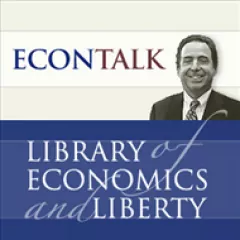- | Monetary Policy Monetary Policy
- | Expert Commentary Expert Commentary
- |
A New Way to Run the US Economy
With the debate heating up over who should replace Ben Bernanke as chair of the U.S. Federal Reserve Board, it’s worth taking a look back to consider just how badly the Fed’s monetary policy missed the mark – and think about how a simple reform can prevent similar disasters in the future.
With the debate heating up over who should replace Ben Bernanke as chair of the U.S. Federal Reserve Board, it’s worth taking a look back to consider just how badly the Fed’s monetary policy missed the mark – and think about how a simple reform can prevent similar disasters in the future.
Six months into 2008 — and six months into a very mild recession — economists understood the scope of the subprime mortgage crisis and expected both modest growth and relatively low unemployment in 2009. Then everything fell apart.
Toward the end of 2008, demand fell sharply, driving asset prices lower and putting stress on the balance sheets of major banks. As home prices fell further, the subprime crisis got much worse than expected. Lehman Brothers failed in September. It wasn’t until December that the Fed cut interest rates to near zero, but by then we were in the midst of the worst slump since the 1930s. Damage was done, but the Fed could have mitigated it.
Economists understand that a major drop in the nominal (read: unadjusted for inflation) gross domestic product (NGDP) triggers high unemployment and increased debt defaults. A consensus view during the “Great Moderation” of 1983-2007 was that it is the Fed’s job to stabilize the growth rate in aggregate demand. And indeed, NGDP grew at a fairly stable 5 percent during the decades leading up to the crash. Then NGDP fell 4 percent between mid-2008 and mid-2009, the sharpest decline since the 1930s. Why did the Fed allow this to happen?
Consider the Fed meeting in September 2008, two days after Lehman failed. It might be shocking to those who think they remember what happened in late 2008 to know that the Fed refused to cut interest rates. Why didn’t it act? Fortunately the Fed told us why, explaining that it saw an equal risk of recession and inflation. But on the day of the meeting, inflation expectations pointed to only a 1.23 percent inflation rate over the next five years, well below the 2 percent target. If the Fed relied on market forecasts, it would have cut rates sharply. Instead it did nothing, and within weeks the global economy was in free fall.
This suggests that Fed policy should be guided by market forecasts, not internal forecasts. The Fed’s concern over high inflation in 2008 reflected the fact that actual inflation was high over the previous 12 months, as oil prices spiked as high as $147.27 per barrel. While the Fed drove the economy by looking in the rearview mirror, markets looked ahead and saw collapsing commodity prices presaging a severe recession and falling consumer prices in 2009. The markets were correct.
